La alimentación del filtro prensa puede ser simple o doble dependiendo principalmente de 3 factores que son: número de placas filtrantes instaladas, peso y tipo de lodos a tratar.
Generalmente, con un número de placas que excede las 50 placas instaladas, se adopta la alimentación dual.
Si el lodo es pesado, difícil de tratar, etc., la fuente de alimentación dual también se puede utilizar para un número menor de placas.
En el doble suministro, como se aprecia en las imágenes, el cabezal móvil también se alimenta con un tubo que en el tramo terminal es flexible para seguir los movimientos del cilindro hidráulico.
The feeding of the filter press can be single or double depending mainly on 3 factors which are: number of filter plates installed, weight and type of sludge to be treated.
Generally, with a number of plates that exceeds 50 plates installed, double power is adopted.
If the sludge is heavy, difficult to treat, etc., the double feed can also be used for a smaller number of plates.
In the double feeding, as shown in the images, the moving head is also fed with a pipe which in the terminal section is flexible to follow the movements of the hydraulic cylinder.
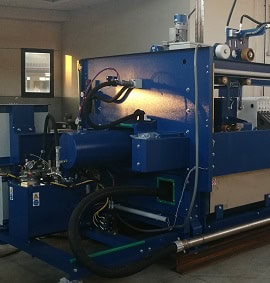
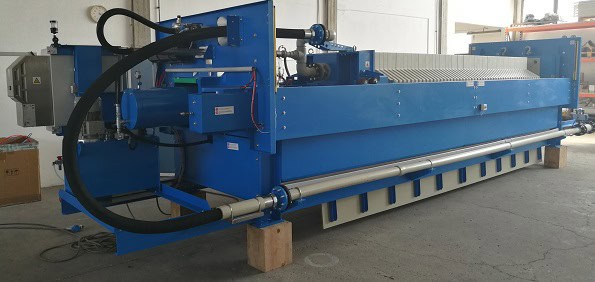
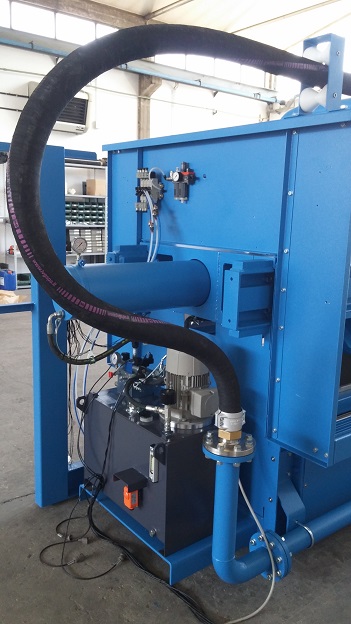
Generalmente, en la alimentación simple, el lodo es alimentado únicamente por el cabezal fijo, mientras que en la alimentación doble también es alimentado por el cabezal móvil para intentar llegar incluso a las placas que están más alejadas del cabezal fijo y para las cuales la alimentación es correcta. es más difícil que el primero.
In general, in the single feeding, the sludge is fed only from the fixed head, while with the double feed it is also fed from the mobile head to try to reach even the plates that are further away from the fixed head and for which a correct feed is more difficult compared to the closest to fixed head.
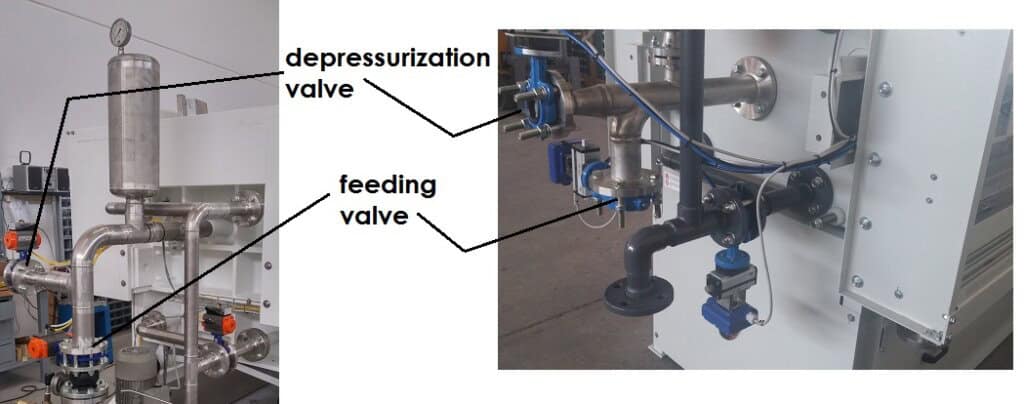
Como puede ver en la imagen de arriba, en la alimentación única, para una máquina estándar, hay esencialmente 2 válvulas: una válvula es para la despresurización mientras que la otra válvula es para la alimentación de lodos.
Cuando comienza el ciclo de filtración, la válvula de despresurización está cerrada, mientras que la válvula de alimentación de lodo está abierta, de modo que el lodo de la bomba de alimentación puede pasar a las cámaras del filtro.
Cuando se completa el ciclo de filtración, antes de abrir las placas del filtro, es necesario liberar la presión residual dentro del filtro prensa. De esta forma cerramos la válvula de alimentación y abrimos la de despresurización para descargar los lodos en un conducto aparte.
Ya sea que la alimentación sea simple o doble, los materiales se pueden elegir según el tipo de lodo a tratar y según la presión de filtración; en la imagen de abajo vemos tubería en polipropileno, acero inoxidable 304,316 o acero al carbono. También podemos gestionar tuberías de acero inoxidable AISI 316 pintadas (segunda figura) o incluso tratamientos de ebonizado en caso de que existan ácidos muy agresivos.
As can be seen from the image above, in the single feed, for a standard machine, there are essentially 2 valves: one valve is for depressurization while the other valve is for sludge supply.
When the filtration cycle begins, the depressurization valve is closed, while the sludge supply valve is open, so that the sludge is allowed to pass from the feeding pump into the filter chambers.
When the filtration cycle is completed, before opening the filter plates, it is necessary to discharge the residual pressure inside the filter press. In this way we close the supply valve and open the depressurization valve in order to discharge the sludge in a separate duct.
Whether single or double feeding, the materials can be chosen according to the type of sludge to be treated and according to the filtration pressure; in the image below we see piping in polypropylene, stainless steel 304,316 or carbon steel. We can also manage piping in painted AISI 316 stainless steel (second figure) or even ebonite coating treatments if there are very aggressive acids.
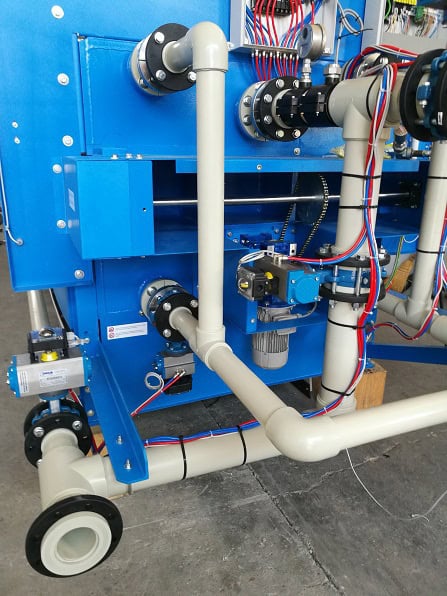
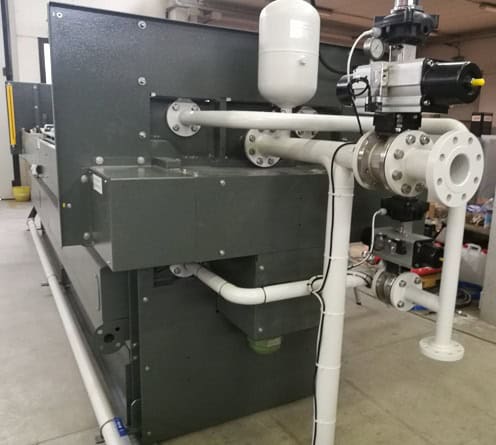
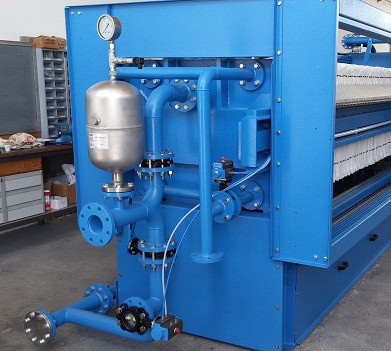
Bajo pedido también podemos realizar ensayos no destructivos en las tuberías, como penetración de líquidos para comprobar que la soldadura se realiza correctamente,
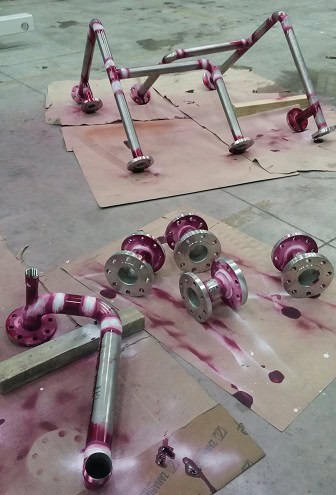
On request we can also provide non-destructive checks on piping, such as penetrating liquids to check that the welding is correctly.